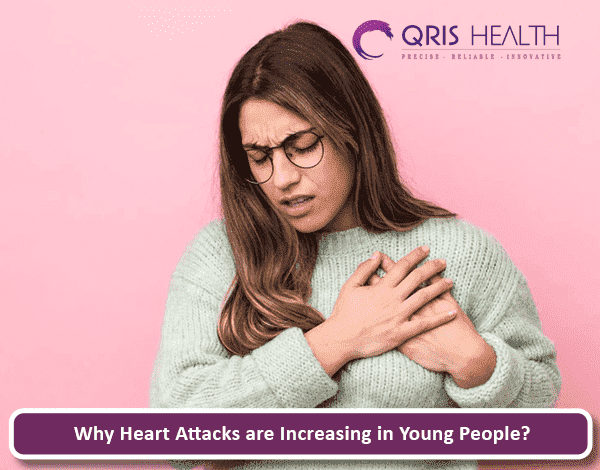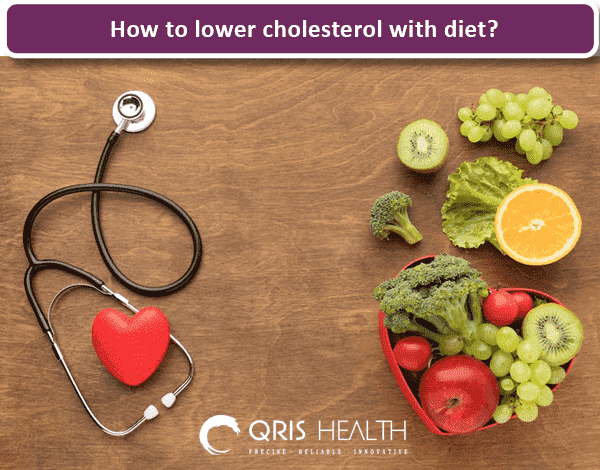When a section of the heart muscle does not receive enough blood, this is known as a heart attack or myocardial infarction. The longer cardiac muscle stays without treatment to restore blood flow, the more damage it will sustain. Most heart attacks can be traced back to coronary artery disease (CAD). On rare occasions, the heart may cease receiving blood because of a severe spasm, or abrupt constriction, of a coronary artery.
Qris Platinum Heart Rate Package
Parameter included: 74
- Lipid Profile
- Thyroid Profile-Total (T3, T4 & TSH- sensitive)
- Kidney Function Test (KFT)
Qris Platinum Heart Rate Package
Parameter included: 74
- Lipid Profile
- Thyroid Profile-Total (T3, T4 & TSH- sensitive)
- Kidney Function Test (KFT)
When does a heart attack show up?
Angina pectoris, often known as chest pain, is one of the most prominent signs of a heart attack. But there are other symptoms of heart attack, which are listed below:
- It is usual for heart attacks to be accompanied by chest pain that lasts more than a few minutes or goes away and returns. Discomfort can personify unpleasant sensations, including pressure, fullness, squeezing, or pain.
- The sensation of weakness, dizziness, or faintness. You can also start sweating uncontrollably. It is one of the pre heart attack symptoms for females.
- Neck, jaw, or back pain or discomfort.
- Shoulder or arm pain or discomfort.
- Extreme difficulty in breathing. This is typically accompanied by chest pain, but in certain instances, shortness of breath might begin before.
- Unusual or unexplained fatigue, as well as nausea and vomiting, may also one of the symptoms of heart blockage in females. These additional symptoms of heart attack also occur more frequently in females.
Where does a heart attack come from?
Most people with a heart attack have a blockage in a blood artery supplying the heart. Typically, this is due to the accumulation of plaque, a gummy substance that can block your arteries (similar to pouring grease down your kitchen sink can clog your home plumbing). The medical term for this accumulation is atherosclerosis. Blood clots can become lodged at the site where plaque deposits inside the coronary (heart) arteries have ruptured. Simply put, a heart attack can be brought on by a lack of blood flow to the heart muscle if a clot stops an artery supplying it. You should know about the symptoms of heart blockage in females.
Although it is possible to have a heart attack without a blockage, this accounts for only around 5% of all heart attacks. There are a few potential causes of heart attack:
- Spasm of the coronary arteries.
- Extremely uncommon illnesses: Diseases that result in abnormal vasoconstriction are a prime example.
- Damage to the coronary arteries, such as a tear or rupture, can be caused by trauma.
- Intra-abdominal or extra-abdominal obstruction: A blockage in a coronary artery caused by a blood clot or air bubble (embolism).
- There was an imbalance of electrolytes.
- Heart attacks can result from years of damage caused by an eating issue.
- Stress cardiomyopathy, also known as Takotsubo.
- Coronary artery anomalies (a congenital cardiac anomaly in which the coronary arteries are located in an abnormal location within the body). Their compression can bring on a heart attack.
These are the common causes of heart attack.
Conclusion
There are several pre heart attack symptoms female, but chest pain is the most prevalent symptom. Warning signs of a heart attack require prompt attention from emergency services. If you have a heart attack, the sooner you obtain care, the higher your chances of survival.






